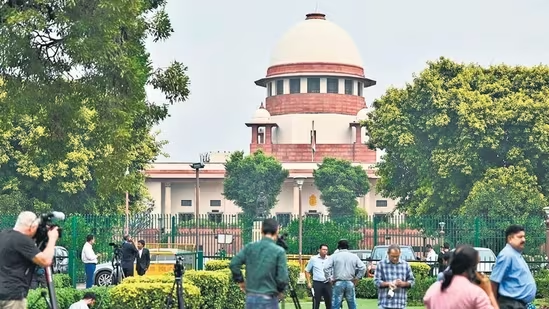What if every Indian, from Kashmir to Kanyakumari, voted for the Lok Sabha and state assemblies on the same day, every five years? The BJP’s ambitious “One Nation, One Election” (ONOE) proposal is trying to make this a reality, and the debate is nothing short of explosive. It promises unity, efficiency, and the kind of cost savings that could rival a Black Friday sale. But does it deliver progress or democracy on a platter to the highest bidder? Let’s unravel this.
ONOE aims to synchronize India’s Lok Sabha, state assembly, and even local body elections into one mega-event. Advocates claim this could save ₹60,000 crores per cycle, eliminate governance disruptions caused by frequent polls, and boost GDP by ₹4.5 lakh crores. Sounds like a win-win, right?
Not quite. Beneath the glossy packaging lies a web of logistical nightmares, constitutional hurdles, and fears of sidelined state issues. Critics argue that ONOE could upend India’s federal structure and concentrate power in the hands of national parties, drowning out regional voices. But before we pick sides, let’s dig deeper.
Why One Nation One Election?
India’s current electoral calendar is a festival that never ends. With some state or local election always around the corner, the Model Code of Conduct (MCC) frequently paralyzes governance. Policies, projects, and funding screech to a halt, leaving governments more focused on campaigning than governing.
Take 2019, when the Lok Sabha elections cost ₹60,000 crores. In the same year, Maharashtra, Haryana, and Jharkhand held state polls, piling on additional expenses and administrative strain. Economists Bibek Debroy and Kishore Desai revealed that India’s governance essentially paused for seven months due to election-related MCCs. That’s half a year wasted.
ONOE promises to end this perpetual election cycle, letting governments actually govern.
Read more: J&K Elections
The Positives
- Cost Efficiency: Holding simultaneous elections could drastically cut expenses on security, logistics, and administrative costs.
- Governance Stability: By eliminating frequent MCCs, governments would have uninterrupted tenures to implement long-term policies.
- Unified Mandate: Simultaneous elections could bring national and state priorities into alignment, fostering collective progress.
The Negatives
- Constitutional Hurdles: India’s federal system allows state and central governments to operate independently. Synchronizing elections would require amending at least five constitutional articles and dissolving or extending several state assemblies—no small feat.
- Midterm Mayhem: What happens if a state government collapses mid-term? Under ONOE, new elections would only serve the remaining term, creating “borrowed governments” focused more on survival than reforms.
- Regional Neglect: When national and state elections are clubbed, local issues risk being overshadowed by larger national debates. Imagine Tamil Nadu’s farmers competing for attention with campaigns on national security.
- Logistical Chaos: Coordinating simultaneous elections for a billion people across 28 states and 8 union territories would require unprecedented resources, manpower, and technology.
Federalism vs. Centralization
ONOE critics argue that it threatens the very foundation of India’s democracy: federalism. Regional parties like the DMK and TMC worry that synchronized elections will erode state autonomy. With a BJP-led central government dominating the narrative, smaller parties fear their regional concerns will be bulldozed by national campaigns.
Consider this: In 2014, the BJP’s national “Modi wave” helped it sweep Haryana’s state elections, despite local issues like unemployment and farmer distress. In a synchronized election, such waves could drown out nuanced state-level concerns, handing national parties disproportionate power.
The Midterm Dilemma
Under ONOE, if a state government collapses mid-term, fresh elections would be held, but the new government would only serve the remaining term. This “borrowed time” approach discourages meaningful governance. Why would a government focus on long-term policies if it knows it’s on a two-year clock?
This is where ONOE critics see danger. Short-term governments, desperate to cling to power, could resort to populist measures and freebies rather than substantive reforms. The real losers? Citizens, progress, and the state’s future.
Why Not Fix the MCC Instead?
The Model Code of Conduct is at the heart of ONOE’s appeal. But is scrapping India’s current electoral system the only solution? Reforming the MCC could achieve many of the same goals without the upheaval. For instance:
- Exempt Development Projects: Allow ongoing policies and projects to continue during elections.
- Streamlined Timelines: Reduce the MCC’s duration to minimize governance disruptions.
These minor tweaks could save money, prevent policy paralysis, and maintain accountability without rewriting the Constitution.
Accountability: The Soul of Democracy
Frequent elections might be expensive, but they keep governments on their toes. In Uttar Pradesh, for instance, voters punished the BJP in 2019 Lok Sabha elections for poor governance, reducing their seat tally from 62 to 33. Such mid-term corrections would vanish under ONOE, leaving voters with fewer chances to hold governments accountable.
The Opposition’s Argument
Unsurprisingly, opposition parties view ONOE as a BJP power grab disguised as reform. They claim it’s an attempt to bulldoze regional parties, cement central dominance, and turn India into a quasi-presidential system. Whether or not this is true, the optics certainly don’t help.
The BJP’s Plan
Despite criticism, the BJP insists ONOE is about efficiency, not control. Their phased rollout proposes synchronizing Lok Sabha and state elections first, followed by local body polls. While ambitious, the plan faces massive resistance, with constitutional amendments requiring approval from 50% of states—a Herculean task in India’s fractured political landscape.
What’s at Stake?
ONOE isn’t just a logistical challenge—it’s a philosophical one. Should democracy prioritize efficiency over diversity? Can a single election truly represent the myriad voices of India? These are questions that demand serious introspection.
Conclusion: Dream or Gamble?
One Nation, One Election is a bold idea that promises a more efficient, cost-effective democracy. But in its current form, it risks undermining the very principles it aims to uphold. For a nation as diverse and complex as India, the solution to election fatigue lies not in synchronization, but in balance—between national unity and regional autonomy, between stability and accountability.
So, is ONOE a genius stroke or democracy’s gamble? That depends on how much you’re willing to trade efficiency for equity. Either way, one thing’s certain: in the world’s largest democracy, there’s never a dull moment.
Read more: This week in Pinnacle Brief



